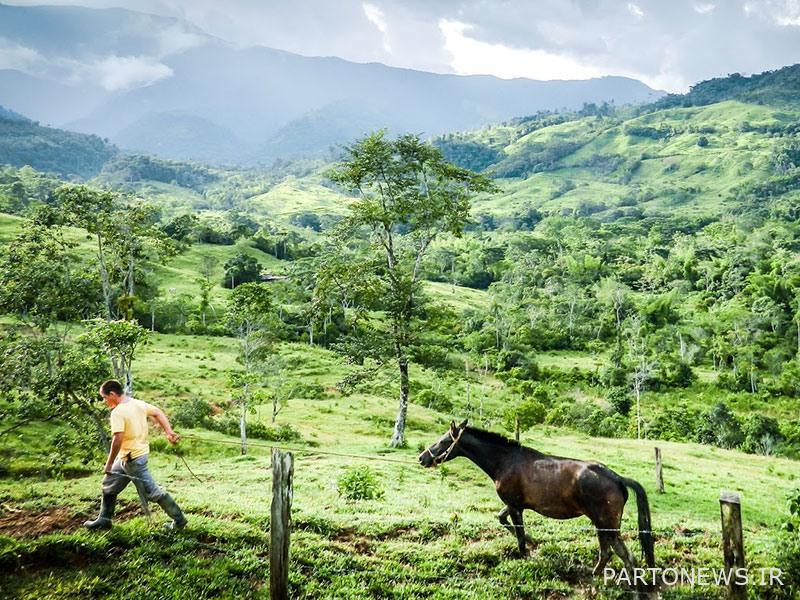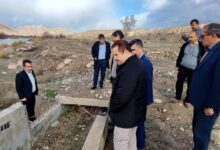agricultural tourism; The pleasure of nature tourism and visiting farms

One of the businesses that have formed between the two fields of tourism and agriculture is “agricultural tourism”. Agricultural tourism is one of the branches of the tourism industry, which, in addition to generating income in the field of tourism, can be considered as a secondary income for farmers.
In this type of tourism, the capacities of the agricultural field are used for tourism. Of course, the mistake that usually occurs and is not paid attention to is that agriculture is limited to agriculture or horticulture at most. While agriculture is a wide range of different activities, such as agriculture, horticulture, animal husbandry, silkworm and bee breeding, fish farming, and each of these activities can be an attraction for agriculture. Therefore, agricultural tourism is the use of infrastructure and agricultural production spaces that serve tourism.
Actually, agritourism is visiting a farm or agricultural activities to enjoy, learn and experience the practical activities related to agriculture.

In this article you will read:
Types of agricultural tourism farms
Holiday Farms: Accommodations in farms and gardens in rural areas are for temporary accommodation of tourists.
Guest Farms: Farms where animal husbandry, horseback riding, fishing, and recreational activities such as photography, tiller riding, boating, picnics, cooking, etc. take place.
Visiting and viewing farms: Visiting and observing the production methods and stages of agricultural, livestock and fisheries products in the farms is considered a tourist attraction. Simultaneous participation in these activities is possible in terms of entertainment.
Citizen Farms: In this type of farms, urban residents own a small plot of land in agricultural areas and work on it on weekends and holidays.
Health Farms: Health farms are places where city dwellers stay to recover their health and often to spend a period of illness or after surgery.
Self-harvesting farms: In the usual case, farmers collect the products of their farms and gardens and transport them to the destination markets and sell them. Self-harvesting farms are farms where the farm doors are open to tourists to choose and harvest the agricultural products themselves and buy the product directly from the farmer and at a cheaper price from the market.

History of agricultural tourism
Agricultural tourism is one of the oldest styles of tourism, and according to studies, its history reaches the end of the 19th century. During World War II in the 1930s and 1940s, when the world economy was in a deep depression, people, especially in war-torn countries, went to the outskirts of cities and villages and experienced different types of rural tourism.
In fact, one of the factors that led tourists to pay more attention to agricultural tourism was their presence in villages and fields. The attractions of agricultural tourism increased in the following decades, and the tourists who were present in the villages helped the owners of land and farms in their activities, such as plowing the land, weeding and picking crops, cleaning stables, and caring for domestic animals. .
In the late 1980s and early 1990s, agritourism became more popular than before, with the addition of services and amenities such as accommodation and hospitality for visitors. Today, in addition to all these things, agritourism has become more universal, and agencies and tourist service offices organize agricultural tourism tours, which have many fans.

The advantage of agricultural tourism
People in different parts of the world have become more interested in how the food they consume is produced. They want to meet farmers and processors and talk to them about what goes into food production. For many people, especially children, agritourism is like seeing the food sources they consume. Whether it’s a milking cow, growing corn bushes or red apples hanging from a tree in a large orchard.
There are many such activities in agricultural tourism and the number of people interested in this style of tourism is increasing day by day. Farmers and ranchers also use this opportunity to develop their business and to know the needs and demands of tourists based on the increasing reception of Agri Tourism tourists.
From an economic point of view, agricultural tourism is a source of income for farmers and a way to stimulate the economy of villages and villages where farms and gardens are located. Agritourism has also become a means of survival for many small farms. Farm and land owners in Egri Tourism can even earn more stable income by expanding the field of activities and diversifying their products.
This is because agricultural activities are more during certain times of the year, such as summer days, and tourists go to villages and farms to spend their free time and have fun during summer vacations. In agricultural tourism, farm owners create a completely separate stream of income for themselves by following these schedules. At the same time, studies show that agri-tourism, by attracting tourists to a region, ultimately benefits the surrounding communities.

The difference between agritourism and rural tourism
Agricultural tourism was originally a subset of rural tourism, but today, because business models and strategies are implemented in them and it is mixed with skills and education, it has been distinguished from this type of tourism. That is, if in the past tourists went to rural farms and had fun, in agritourism, tourism has a wider field of action and creates a high added value for farm owners and, to a greater extent, companies and agencies active in the field of agricultural tourism.
Agricultural tourism has other differences with rural tourism. Including that in agritourism, tourists participate in all or part of the production process by being in the farm or land. Another issue is education and learning in the field of agriculture and farming. That is, in agricultural tourism, tourists should be given a unique opportunity to learn more about life and lifestyle, farm management and daily activities.
Also, in agricultural tourism, tourists have the possibility of direct communication with domestic animals in farms and gardens and livestock lands, and this is especially exciting for children. Agricultural tourism is actually an excuse and an opportunity to attract tourists to forgotten areas whose economy is based on agriculture, but until a few decades ago, they did not have a place in family travel and tourism destinations. In other words, tourists go to villages with the aim of experiencing agricultural life, but most of them get this experience by being in farms and gardens and engaging in such activities.

Why is agritourism increasing?
Agriculture has become a big business run by multinational corporations. These relationships and warnings about the lack of resources in the future have made many farmers, especially small and micro farmers, to try alternative paths. Agritourism is one of the choices that the world has reached a tacit agreement on. On the other hand, it is said that agricultural tourism gives a suitable economic opportunity to rural social classes and groups. Many farmers have turned to combined agriculture and tourism businesses, which, in addition to generating more income for themselves, has also created new opportunities for tourists.
Now, the number of tourists who say to listen to the sounds of returning to nature has increased, and instead of flying to a warm and temperate climate and being by the pool and exotic foods, they follow these interests on social networks.
Tourists today, in their search for new routes and styles of tourism, choose fields and gardens and natural landscapes more than in the past. Local culture, food, local plants and animals are also not affected by this abundant desire of tourists to villages and nature tourism. That is, agri-tourism has created a new insight among tourists who are looking for pure and valuable experiences. If tourism is a way to grow smaller economies and local businesses in countries that have the necessary infrastructure and capacity.

Why does Iran need agricultural tourism?
At the same time, agricultural tourism has other functions and can be proposed as a solution to overcome climatic instability and cultural and social changes after that. Many experts believe that for Iran’s climate, which is struggling with changes such as long-term droughts, water shortages, soil erosion, and environmental crises, agricultural tourism is one of the best solutions, which, in addition to preventing migration and emptying of villages, plays an important role. It will play a role in their economic improvement.
The development instability of villages in Iran has been a big problem for development programs for a long time and it seems that by supporting rural tourism businesses, it is possible to guarantee the population of rural settlements and provide the foundations for the development of the local community and the survival of rural culture. Therefore, investing in agricultural and rural tourism will not only attract more visitors to villages with different motivations, but it is also a sure way to make development of these areas possible.
An issue that has not escaped the eyes of policymakers. The Ministry of Cultural Heritage, Tourism and Handicrafts, with its activities in the last one or two years on improving the livelihood of farmers and sustainable rural development, protecting the legitimate and legal rights and interests of agricultural tourism sector activists and using their capacity to promote tourism goals such as reducing unemployment and increase the income of villagers and reduce adverse environmental effects.


